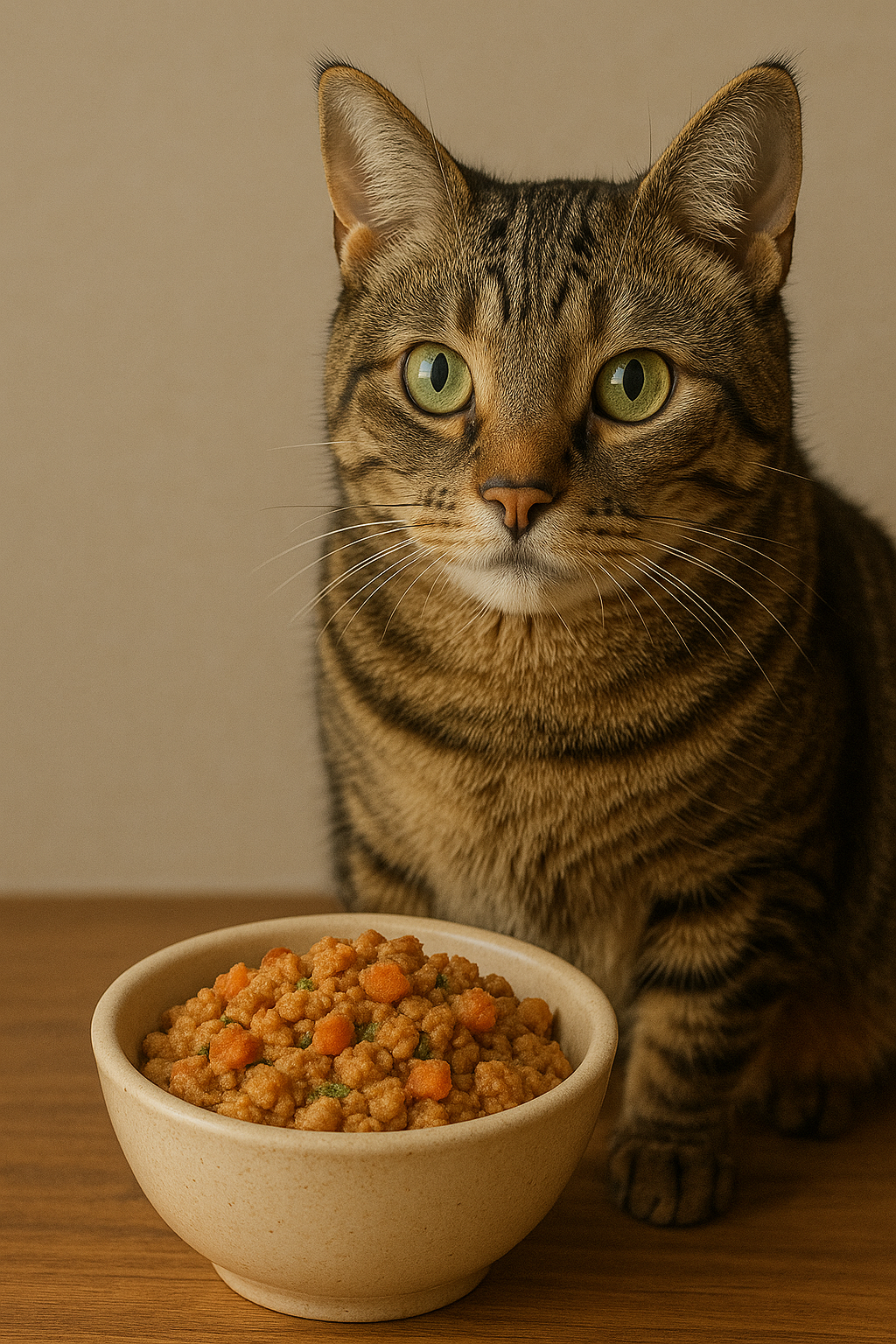
The Ultimate Guide to Cat Food for Diabetic Cats in Australia (2025)
Managing feline diabetes—particularly Type 2 diabetes, which is the most common form in cats—relies heavily on diet. High-protein, low-carbohydrate meals help reduce blood sugar spikes and may even improve remission chances. A high-moisture diet amplifies these benefits by aiding hydration, supporting urinary tract health, and promoting healthy weight management.
Understanding Feline Diabetes: The Role of Diet in Type 2 Management
Feline diabetes shares many features with human Type 2 diabetes, often being driven by insulin resistance and β-cell dysfunction. Studies have shown that switching diabetic cats to low-carbohydrate, protein-rich diets can significantly lower insulin requirements, with some cats achieving remission entirely.
Why Protein and Moisture Matter
A diet based on animal protein slows the absorption of glucose, which reduces post-meal blood sugar peaks. Moisture is equally important: wet or fresh meals support hydration, kidney function, and urinary tract health—particularly vital for diabetic cats, who are often prone to dehydration.
The Limitations of Dry Kibble
Most dry kibble is high in carbohydrates and low in moisture. These factors can contribute to spikes in blood glucose, dehydration, and difficulty in managing weight. For this reason, many veterinarians and feline nutrition experts advise against feeding diabetic cats dry kibble as a primary diet.
Fresh Food and Modern Recommendations
Supermarket Foods vs. Fresh Alternatives
Supermarket brands often include grains, fillers, meat by-products, or artificial preservatives. These ingredients are unnecessary in diabetic management and can complicate blood sugar control.
In contrast, fresh food diets use whole ingredients, are naturally higher in moisture, and avoid additives. In Australia, an increasing number of veterinarians are recommending these diets for cats with medical sensitivities, including diabetes.
Veterinary and Nutritionist Endorsements
The trend toward transparent, minimally processed nutrition reflects a broader shift in veterinary recommendations, with emphasis on protein quality, controlled fat, and minimal carbohydrates.
Pikko’s Fresh Cat Food (and Other Options)
While many brands are available, Pikko has become a prominent option in Australia by offering:
-
100% human-grade ingredients with no fillers, grains, or by-products.
-
High protein and moisture with no artificial preservatives.
-
Vet-formulated recipes that meet AAFCO nutrient standards for all life stages.
Meals include whole cuts such as chicken thigh, heart, and liver, with fish oil for essential fatty acids. They are gently cooked and frozen to preserve nutrients and moisture.
Alternatives
-
Commercial wet foods (e.g., Fancy Feast, Applaws): While providing moisture, many contain thickeners, gels, or ambiguous protein sources.
-
Dry food: Even “premium” formulas often remain too high in carbohydrates. For example, some veterinary diets marketed for diabetic cats still have carbohydrate levels above recommended ranges.
Managing Diabetes Through Diet: Practical Tips
-
Transitioning diets: Gradual shifts—mixing small amounts of fresh food with current meals—reduce digestive upset and improve acceptance.
-
Nutritional targets: Aim for meals with at least 50% of calories from animal protein, 20–40% from fat, and less than 10% from carbohydrates.
-
Consistency: Regular feeding schedules help stabilise blood sugar and align with insulin dosing where relevant.
Frequently Asked Questions
1. Why is moisture important for diabetic cats?
Moisture supports hydration, kidney and urinary tract health, and weight control—especially since many cats drink very little on their own.
2. Can diabetic cats eat kibble occasionally?
While small amounts may not be harmful, regular kibble feeding can spike blood glucose and undermine insulin therapy.
3. Is fresh food more expensive?
Fresh diets are often more costly than supermarket tins or kibble. However, improved glycaemic control and overall health may reduce long-term veterinary costs.
4. How does protein help manage diabetes?
Protein slows carbohydrate absorption, stabilises blood glucose, and supports lean muscle mass.
5. Are there risks with fresh diets?
Not if recipes are formulated by veterinary nutritionists. Owners should ensure safe handling and feed only complete and balanced recipes.
6. How do I transition my cat to fresh food?
Introduce new food gradually over 1–2 weeks. Monitor appetite, digestion, and blood sugar levels with your vet’s guidance.
Conclusion: Fresh, High-Quality Nutrition for Diabetic Cats
In 2025, the consensus among many Australian veterinarians is clear: a high-protein, low-carbohydrate, high-moisture diet is the gold standard for diabetic cats. While several options exist, fresh diets—such as those formulated by Pikko—offer a balanced, vet-designed approach with transparent, human-grade ingredients.
For owners, the most important step is ensuring any diet chosen is complete, balanced, and tailored to their cat’s medical needs—with ongoing veterinary supervision.